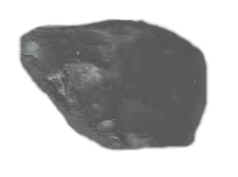|
CALCITE
|
 |
Calcite is a carbonate of calcium and is one of the world's most common minerals. It is mainly white but may also be blue, green, red or yellow and is stable at all temperatures and pressures near the earth's surface.
It's name is derived from the Greek word chalix, which means limestone. It is the main constituent of all limestones and is also found in marbles. It may also form as stalagmites or stalactites.
The finest specimens are known as Iceland Spar (after the country where it was first found). The Dutch physicist Huygens used this to formulate the wave theory of light. Scientists also used it to develop the theory of crystal structure.
Another example is Carrara marble (from Italy), which is used world wide. It is also used for making cement.
It is fairly soft (3 on the mohs scale) and is formed mainly in sedimentary rocks but also in some metamorphic rocks.
Calcite may also be found in Cornwall and Durham (UK), France, Germany, Italy and the US.
|
CANNEL COAL
|
 |
Cannel coal is a fuel source which is formed from vegetable and organic matter which has been altered by heat beneath the earth's surface. It's formation begins in lakes when algae, spores, fungi, vegetable matter and the remains of aquatic organisms are softened and broken up. They then accumulate at the lake bottom (in anaerobic conditions) and form an unconsolidated sludge. The addition of heat from beneath the earth's surface results in the formation of cannel coal over many years. The greater the heat it is formed at the more efficient it is as a fuel source
It is black in colour and fragments of vegetable matter may be visible when it is extracted because it forms under low pressure and is therefore only partly changed into rock. It is usually found on top of layers of coal and is widespread.
It was used in the 1800's for manufacturing gas but today more abundant and cheaper fuels are available.
It may be found in Norway and the Pennines (UK).
